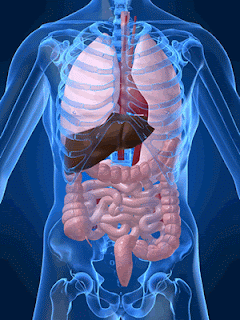Do you need HELP?
Don't worry, there are several diet products which can help you
Having troubles with yourself?
Actually, you just have to believe you are special
Don't know what to eat?
We have a solution for you!!!
Do you want to download your favorite movies?
Here you can fine where to download it!!!
Do you want to make your PC 'feel' better?
We have a solution for that
Thursday, 4 October 2012
Monday, 24 September 2012
High-Risk Groups [Part 3]
Young adults between the ages of eighteen and twenty-nine have the highest prevalence of alcohol abuse.
Persons who begin to drink at an early age, especially before the age of fourteen, have a greater risk for developing problems with alcohol.
Persons with a family history of alcohol abuse or alcoholism are also more likely to experience alcohol-related problems.
In the United States, American Indians and Alaska Natives (AI/ANs) have the highest rates of current and heavy drinking of all racial or ethnic groups. Deaths from chronic liver disease and cirrhosis are nearly four times greater among AI/ANs compared to the general U.S. population. They also have a higher prevalence of drunk driving compared to the general U.S. population.
The U.S. Department of Health and Human Services and the U.S. Department of Agriculture recommend that alcohol be consumed in moderation only. Moderation is considered two drinks per day for men and one drink per day for women (one drink is defined as twelve ounces of beer, five ounces of wine, or 1.5 ounces of a distilled spirit).
Drinking alcohol is inappropriate for recovering alcoholics, persons under the age of twenty-one, persons taking medication, those who plan to drive, and women who are pregnant or plan to become pregnant.
There is no known safe level of alcohol consumption during pregnancy, as it could injure the fetus. Alcohol consumption during pregnancy may result in fetal alcohol syndrome (FAS) or fetal alcohol effects (FAE). FAS is characterized by growth retardation, facial abnormalities, and central-nervous-system dysfunction.
FAS is irreversible and will affect children their entire life. If a fetus's exposure to alcohol during pregnancy is not severe enough to cause FAS, it may result in fetal alcohol effects (FAE), alcohol-related developmental disabilities (ARDD), or alcohol-related neurodevelopmental disabilities (ARND).
In conclusion, knowing the effects of alcohol on the body and the consequences of alcohol abuse and misuse is very important. When consumed in large amounts or irresponsibly, alcohol can cause extensive damage to health and well-being, including liver damage, poor nutritional status, birth defects, and death. Therefore, if alcohol is consumed, it should be done so responsibly and in moderation only.
CRADITE TO >>> http://www.diet.com/
Thursday, 20 September 2012
Alcohol and Health [Part 2]
The risk for
developing alcoholism is influenced by a person's genes and lifestyle
behaviors. Alcoholism is a chronic disease that lasts for a lifetime. If
diagnosed and treated early, however, alcoholism may be completely cured and
severe complications prevented.
Chronic
alcohol abuse increases a person's risk for developing serious health problems,
such as liver disease, high blood pressure, heart disease, stroke,
cancer (especially cancer of the esophagus, mouth, and throat), and
pancreatitis.
Approximately
two million Americans suffer from liver damage caused by alcohol abuse. About
10 to 20 percent of heavy drinkers will develop cirrhosis of the liver, which
is characterized by scarring of the liver and causes irreversible damage.
If heavy
drinkers do not stop drinking, cirrhosis can cause poor health and, ultimately,
death. In addition to cirrhosis, heavy drinkers may suffer from chronic liver
disease or alcoholic hepatitis.
Damage to
the liver can lead to problems with blood sugar levels. When alcohol is present
in the body, the liver works to metabolize it. Because the liver is busy
metabolizing alcohol, it is often not able to adequately maintain blood sugar
levels, which may result in hypoglycemia (low levels of blood sugar).
Hypoglycemia
is most likely to occur in individuals who have not maintained an adequate diet.
When it occurs, the brain is not able to receive the energy it needs to
function, and symptoms such as hunger, weakness, headache, tremor, and even
coma (in severe cases) may occur.
Chronic
alcohol abuse can lead to poor nutritional status. Chronic heavy drinkers do
not eat adequate amounts of food because of the high caloric content of
alcohol. This prevents them from getting the required vitamins and minerals to
maintain health and well-being.
Furthermore, when a person consumes large
amounts of alcohol, it impedes or halts the digestion of food, as alcohol
decreases the secretion of digestive enzymes from the pancreas.
Alcohol also
inhibits the absorption of nutrients into the blood. This
decrease in digestion and absorption over a long period of time can lead to malnutrition.
To be continued......STAY TUNE
CRADITE TO >>> http://www.diet.com/
CRADITE TO >>> http://www.diet.com/
Thursday, 13 September 2012
Alcohol and Health [Part 1]
Alcohol is a central-nervous-system depressant that affects judgment, coordination, and inhibition. Mild alcohol intoxication causes a relaxed and carefree feeling, as well as the loss of inhibitions.
After several
drinks a person will exhibit impaired judgment, poor coordination, and slurred
speech, while consumption of alcohol in large amounts can lead to coma and even
death.
Blood
alcohol concentration (BAC) is a measurement of the amount of alcohol in a person's
blood. Most states consider a person to be legally drunk at a BAC between .08
and .10. At a BAC level of .40 to .50, a person may go into a coma, while a BAC
level of .60 to .70 will cause death.
Alcoholic
beverages can be divided into three categories: beer, wine, and distilled
spirits. Beer includes beer, ale, and malt liquor; wine includes wine,
CALORIES IN
ALCOHOLIC BEVERAGES AND MIXERS
Beverage
|
Number of
Calories
|
Beer, 12
oz.
|
150
|
Martini, 3
oz.
|
145
|
Rum, 1 oz.
|
73
|
Sherry, 3
oz.
|
150
|
Wine, 5
oz.
|
100
|
Scotch, 1
oz.
|
73
|
Champagne,
wine coolers, and vermouth; and examples of distilled spirits are gin, rum,
vodka, and whiskey. Alcohol provides no vitamins or minerals,
only calories. Small amounts of alcohol are absorbed from the mouth,
approximately 20 percent is absorbed in the stomach, and the remaining 80
percent is absorbed in the small intestine.
Alcoholism
can be identified through four symptoms:
(1) a
craving or strong urge to drink alcohol
(2) not
being able to stop drinking
(3) physical
dependence
(4) tolerance.
Physical dependence occurs when an individual depends on the presence of alcohol to function normally. Tolerance occurs when the same amount of alcohol results in a lesser effect; therefore, more alcohol must be consumed in order to feel the same effect.
Individuals
may have a problem with alcohol abuse if they exhibit one or more of the
following symptoms:
- work and
money problems
-drinking
while driving
-being
arrested due to drinking
-exhibiting
violent or aggressive behaviors, or
-continuing
to drink despite the problems that result from drinking.
To be
continued......STAY TUNE
CRADITE TO >>> http://www.diet.com/
CRADITE TO >>> http://www.diet.com/
Friday, 15 June 2012
Healthy Eating
EASY TIPS FOR PLANNING A HEALTHY DIET AND STICKING TO IT
Healthy eating is not about strict nutrition philosophies, staying unrealistically thin, or depriving yourself of the foods you love. Rather, it’s about feeling great, having more energy, stabilizing your mood, and keeping yourself as healthy as possible– all of which can be achieved by learning some nutrition basics and using them in a way that works for you. You can expand your range of healthy food choices and learn how to plan ahead to create and maintain a tasty, healthy diet.
Healthy eating tip 1: Set yourself up for success
To set yourself up for success, think about planning a healthy diet as a number of small, manageable steps rather than one big drastic change. If you approach the changes gradually and with commitment, you will have a healthy diet sooner than you think.- Simplify. Instead of being overly concerned with counting calories or measuring portion sizes, think of your diet in terms of color, variety, and freshness. This way it should be easier to make healthy choices. Focus on finding foods you love and easy recipes that incorporate a few fresh ingredients. Gradually, your diet will become healthier and more delicious.
- Start slow and make changes to your eating habits over time. Trying to make your diet healthy overnight isn’t realistic or smart. Changing everything at once usually leads to cheating or giving up on your new eating plan. Make small steps, like adding a salad (full of different color vegetables) to your diet once a day or switching from butter to olive oil when cooking. As your small changes become habit, you can continue to add more healthy choices to your diet.
- Every change you make to improve your diet matters. You don’t have to be perfect and you don’t have to completely eliminate foods you enjoy to have a healthy diet. The long term goal is to feel good, have more energy, and reduce the risk of cancer and disease. Don’t let your missteps derail you—every healthy food choice you make counts.
If you want to make yourself healthier, click here
Tuesday, 10 April 2012
Isatellitelink
- Why Waste $100 Every Month on Cable & Satellite?
- You Get Over 3600 HD Channels Available Worldwide! Including Automatic Channel Updates
- No Subscription or Monthly Fees.. EVER!
- You Get Full Access to Download DVD Movies Legally!
- You Get The Stream Downloader Video Recorder
- You Get The All-In-One Media Converter to Convert Your Downloaded Media to any Portable Device
You Should Cancel Your Cable Right Away.
Order Your Copy Of Isatellitelink Today!
Monday, 9 April 2012
HHO Booster
Big Oil Companies Don't Want You To Know the Secret
That Hydrogen Fuel
Is Far Cheaper, Safer
And More Powerful
Than Any Other Existing Fuel Today...
That Hydrogen Fuel
Is Far Cheaper, Safer
And More Powerful
Than Any Other Existing Fuel Today...
Did you know that a modern gasoline engine has an average efficiency of about 25 to 30%. In other words, 70 to 75% of the energy stored in that expensive fuel wastes as heat, pollution (unburned fuel!) and vibration, and only about 25% of energy moves the vehicle. Here you can find out how to build a hydrogen fuel cell for your car, that will make your car more efficient and cut your gas bill in half increasing your car's performance.
For more information, click here
Subscribe to:
Posts (Atom)



















